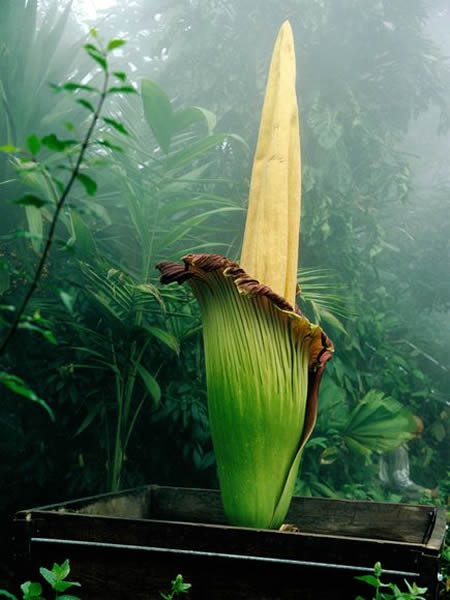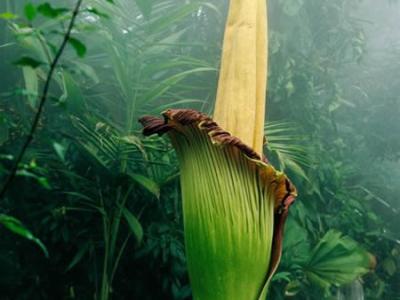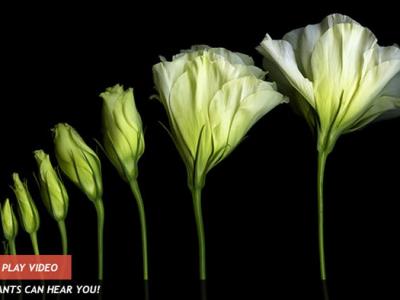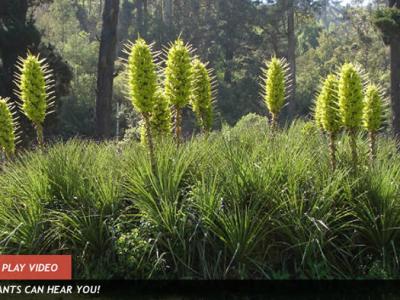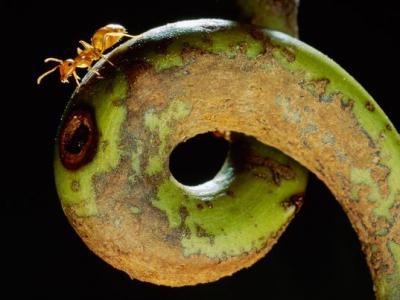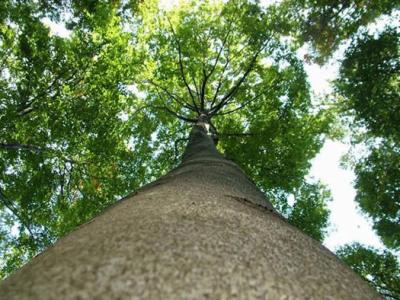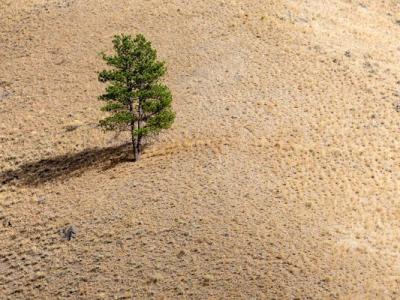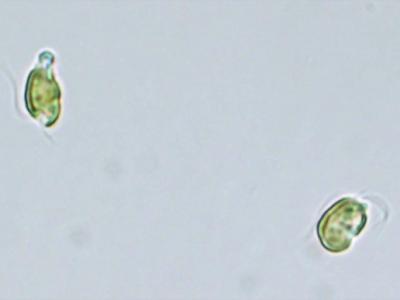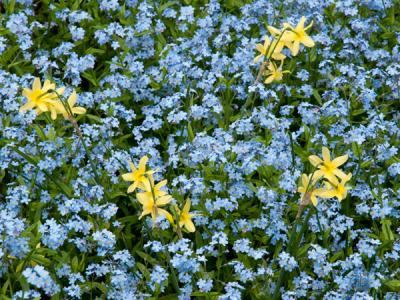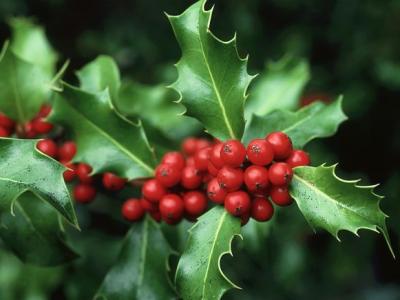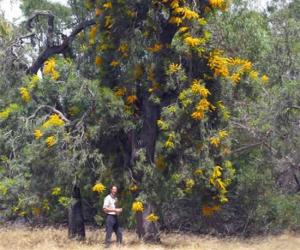Stop and Smell the Corpse Flower
A titan arum, or corpse flower, blooms in England's Kew Gardens.
With a name like corpse flower, you know the titan arum (Amorphophallus titanum) isn't going to be smelling like a rose.
But until you've gotten up close and personal with the putrid plant, it's not clear just how terrible a flower can smell.
A "flash of diaper." The "essence of rotting fish combined with the essence of rotting onion." "A farm on a hot day, where a cow has died."
Those are all descriptions used by staff members of the U.S. Botanic Garden who endured the blooming of a corpse flower in 2007. Six years later, the garden located near the U.S. Capitol is hosting a second fetid flower—and visitors are flocking in to catch a whiff of its signature stink.
Part of the reason the corpse flower is drawing such big crowds is because it rarely blooms. It is also one of the biggest, stinkiest plants on the planet, says Bill McLaughlin, the curator of plants at the U.S. Botanic Garden. And while the odor is overwhelming to humans, to dung beetles and flies it smells like opportunity.
"It makes them think there's rotten meat somewhere to lay their eggs, and then that helps the corpse flower to get pollinated," says Mo Fayyaz, the greenhouse and garden director at the University of Wisconsin's department of botany, who has worked with corpse flowers in the past. "It smells bad to us, but it smells great to flies."
Why So Smelly?
The titan arum is shaped like a cup. When flies and beetles come across it, they make their way into the plant's bloom searching for the source of the revolting—or delicious, depending on your species—scent.
"What the flowers are doing is putting out these sulfur-ridden odors, and this is the magic button for these flies," says Rob Raguso, a chemical ecologist and associate professor at Cornell University. "The flies fly in from a distance, land, and then look for dark places within the flower to lay their eggs."
According to McLaughlin, the pollinators wedge themselves into the corpse flower's tight spaces, attracted by the overwhelming smell of carrion. In the process, they become covered in pollen. With any luck, they will pollinate the next stinky flower in their path.
Plants With a Putrid Purpose
Native to Indonesia, the corpse flower favors high heat and humidity and ample space. Though the plant itself is relatively uncommon, the tricks it plays are also used by other members of the plant kingdom.
Take the rafflesia, for instance, the giant, dark-red rainforest plant native to Southeast Asia. Nicknamed the "meat flower" by locals, it too uses a rotting flesh smell for pollination purposes.
There's also the starfish flower (Stapelia gigantea), which lives in the deserts of southeastern Africa. Like the rafflesia, it is also maroon—a color that screams "rotting animal" to passing flies and beetles.
And then there are the more aptly named stinky plants: the skunk cabbage, the stinkhorn, and the dead horse arum lily, to a name a few. In nature they serve different purposes, but to humans they are similarly sickening.
"I've heard everything from dead rodent, to dog poop, to rotting elephant flesh," says McLaughlin.
He laughs, adding that sometimes these pungent plants can serve a more mischievous purpose, particularly when you're an employee of the U.S. Botanic Garden.
There's a plant called konjac—native to Southeast Asia—which, according to McLaughlin, is "pound for pound, the worst-smelling plant of them all."
It's small, and thus portable, and can be easily hidden in, say, a coworker's office or inside a locker room. He found that out the hard way, when a coworker decided to hide the smelly konjac inside their shared locker room.
"It took me awhile, but I knew it was in there," he says. "But before I found it, I was gagging because of the smell."
Tourist Attraction
Despite its olfactory offensiveness, the corpse flower lures in more than just flies. Thousands of visitors are making their way to the Botanic Garden to see the plant's short bloom, which lasts only 24 to 48 hours.
But if it smells so awful, why are people attracted to it?
"There's something unique about it. It makes people excited," says Fayyaz. "Every flower that you encounter, it's a smell that humans like. But this is different."
McLaughlin agrees that it's the paradox that draws people in.
"We'd never get away with putting out a dead animal for you to smell," he chuckles. "But somehow when it's a flower it's perfectly acceptable."
Melody Kramer contributed reporting to this piece.
Lara Sorokanich
National Geographic
Published July 15, 2013
